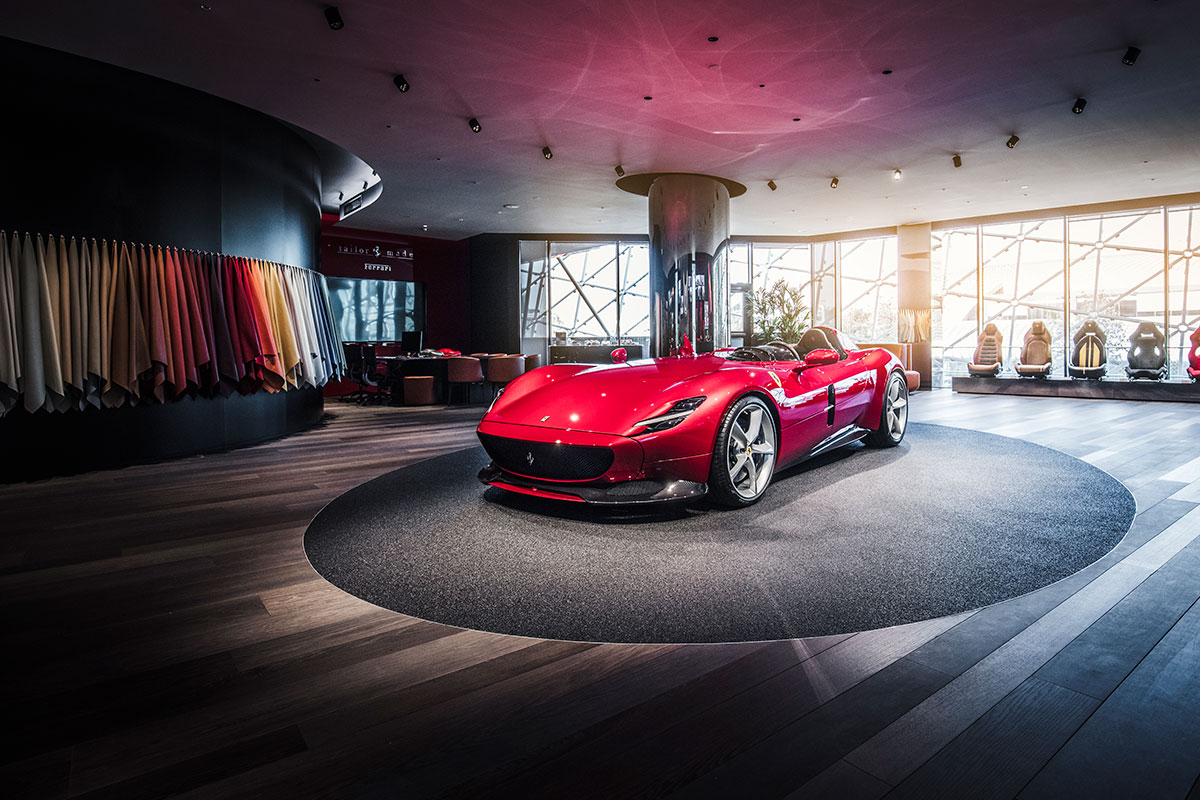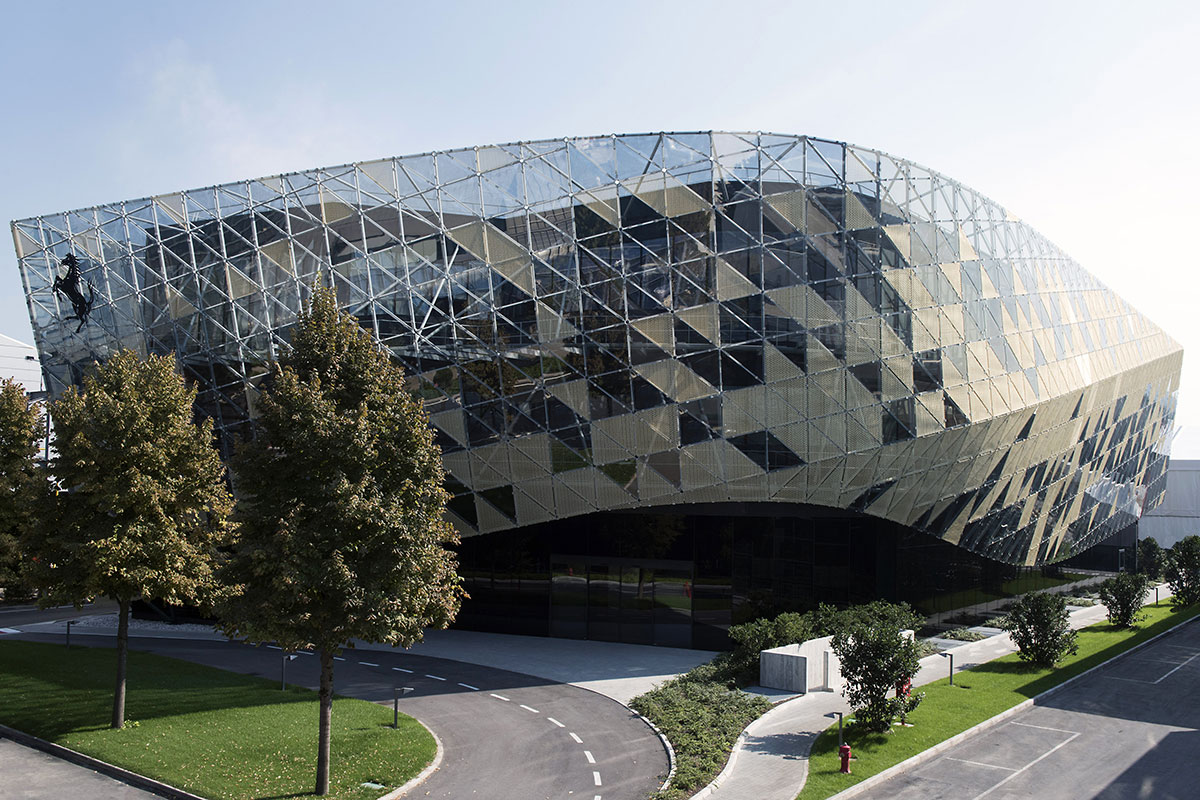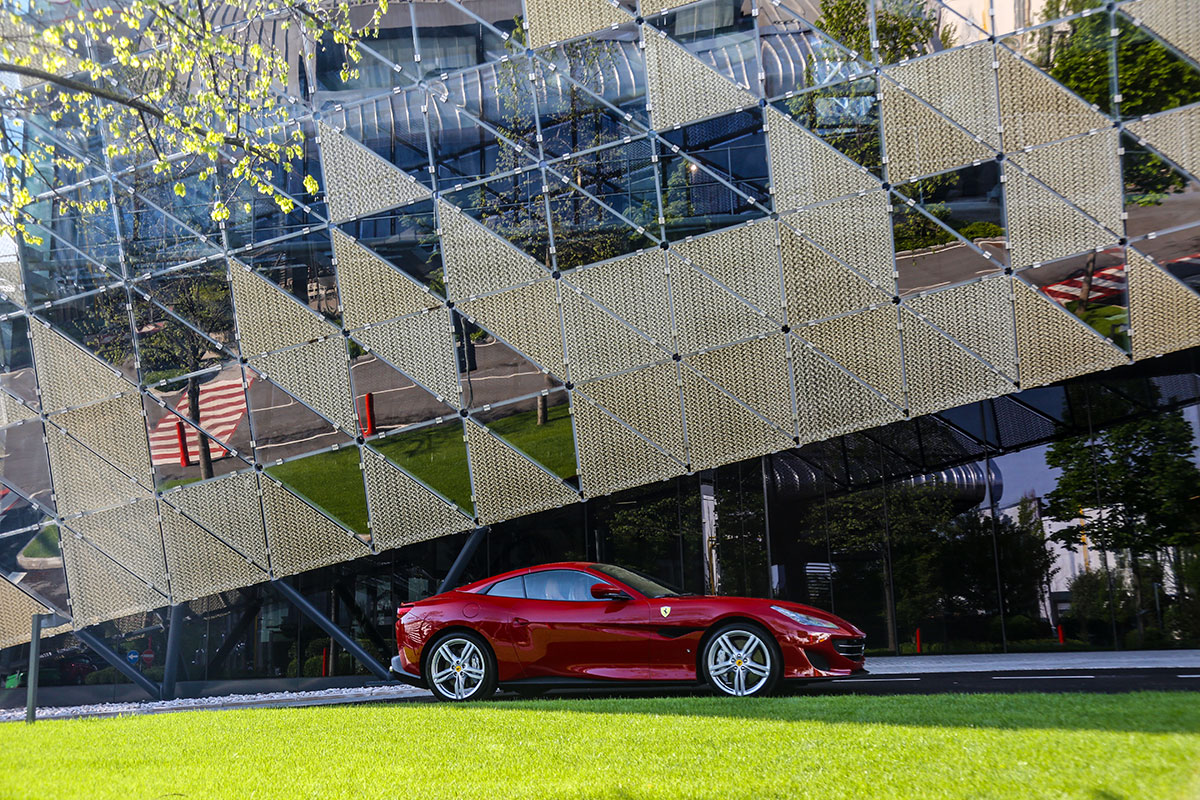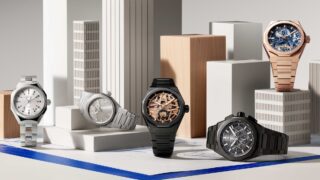This website uses cookies so that we can provide you with the best user experience possible. Cookie information is stored in your browser and performs functions such as recognising you when you return to our website and helping our team to understand which sections of the website you find most interesting and useful.
Take a tour of Ferrari’s spectacular dream factory in northern Italy
By Adam Hay-Nicholls | 6 August 2019 | Cars & Yachts, Lifestyle
As Ferrari continues to dominate the luxury sports car arena, head of design Flavio Manzoni opens its doors to Tempus

Approaching Maranello in northern Italy’s Emilia-Romagna region, we could be in any modestly sized pastel-coloured industrial town. Yet, once you reach the perimeter road around Ferrari’s sprawling works, you realise what it really is; a dream factory.
The sports cars produced here need no introduction. The buildings themselves describe the legendary company’s 72-year history. The Ferrari factory is an architectural mix, some buildings dating back to before WW2, others Brutalist from when the marque got into gear, and there are also more recent post-modern offerings from starchitects Renzo Piano and Jean Nouvel. Rising a few storeys above the Fiorano test track which threads around it, the farmhouse that Enzo Ferrari used as his office still stands: handsome, rustic and whitewashed, with red shutters and a yellow Ferrari flag flapping above the entrance. The study is preserved just as it was when the founder closed the door for the last time in 1988. The ghost of Enzo is felt all around, including in the many buildings that have grown out of the plant in the three decades since his death.
Opened in September 2018, the Centro Stile (styling centre) is where the lines of future Ferraris are first traced and dreams of speed and romance are realised. In establishing this hub, head of design Flavio Manzoni has brought aesthetics to ground zero, where previously styling had been outsourced, predominantly to Pininfarina in Turin. This is the first time Ferraris have been designed entirely in-house and on the premises.
“We have taken the same approach to this building as we do to the design of our cars,” Signor Manzoni, 54, tells Tempus as we wander around both the styling centre and a brace of scarlet and silver-coloured Portofino roadsters therein. “There is dynamism, there is tension, there is an accelerative effect. These terms are not normally used in architecture.”
An architect by training, Manzoni, who has led the Ferrari design team since 2010, worked closely with Davide Padoa of London-based Studio Design International to build the ultimate creative studios, workshops, customer atelier and presentation spaces right in the heart of the Maranello plant. The concave and convex surfaces and the exterior’s double-skin façade, comprising 3,000 glass and gilded aluminium elements, recalls the sculpture of a supercar. Natural light floods the three visible levels, while there’s another underground. >>
Related: Meet the Scottish firm producing the world’s finest automotive leather

“We use plasticity and logic in determining the surfaces of the car, using a triangular element to curve surfaces in a free way, and we have used the same philosophy in the light-filtering screens and panels that shroud the building, some of which are denser than others so as to make the more secretive areas of the facility impenetrable,” explains Manzoni. “The building has been designed to stick out, to trigger a kind of emotion and surprise.”
The first car to be presented here was the SP1/SP2 Monza – a £1.6m single or twin-seat V12 super-barchetta, limited to 499 units, that draws heavily on the Prancing Horse’s DNA, in particular the 1954 750 Monza. Manzoni sought to create the purest possible design, as though born from a single pencil stroke, conveying timeless elegance, minimalist form and refined detail. With laudable judgment, Centro Stile has taken the spirit of a 1950s racer and executed a visionary piece of modern dynamic sculpture which clothes state-of-the-art stopwatch- busting engineering. It’s haute couture with 810bhp in the lining.
“Everything starts with a dream and looking into the future,” explains Manzoni. “It’s essential to consider how the product will be perceived in 50 years. If there is no innovation, there is only style. The car needs connecting to its technical soul.”
Manzoni and his team succeed in reimagining and reinterpreting Ferrari’s heritage while avoiding nostalgic repetition. Timelessness is a fundamental element in the design of a Ferrari. The necessity of creating an enduring masterpiece has been recognised by Ferrari designers universally over the years, overcoming trends and challenges to create objects of eternal beauty, outlasting changing fashions and evolving tastes. “Retro has been a trend for 20 years, but every new product needs to belong to its time,” notes the head of design. “Design is the best messenger to a world that is superior to the natural one.”
In addition to the creation of all-new projects, the Centro Stile houses Ferrari’s Tailor Made department, the personalisation atelier where around 100 cars a year are given customised colours, materials and liveries – what Manzoni describes as “the soft aspects” – according to the customer’s imagination and request, at extra cost of course. Bullhide and alcantara are Ferrari staples, but for crocodile or eel you come here. If you want wood from a tree on your estate, or your car the exact colour of Tom Ford Cherry Lush lipstick, Tailor Made will make it happen. “It’s dangerous if you’re a designer,” jokes Manzoni. “You make the perfect car and then the client wants to change it.” >>

Ferrari, however, remain arbiters of taste. If they think your idea of having seats made from whale foreskin is in poor taste and would spoil their brand, they’ll put the brakes on your plans. (Yet for some reason they didn’t stop golfer Ian Poulter lining the roof of his white FF with tartan…)
Ferrari’s design language represents a delicate balance between form and function, devoid of decoration for decoration’s sake. Beauty never comes at the expense of performance. Yet surely no other industrial company is responsible for so much beauty. Each Prancing Horse seems designed to excel on every plane, without compromise. Manzoni likes to quote the sculptor Brancusi, that simplicity for him is “complexity resolved.”
Many question, with mainstream cars going autonomous, what the long-term destiny of performance motoring holds. It may become niche, and all the more exclusive, which is exactly the environment in which the exports of Maranello thrive. The author JG Ballard once wrote of how, in the future, driving will be restricted to private parks under psychiatric supervision. Manzoni is more reassuring. “These cars are a symbiosis of man and machine, and of hedonistic pleasure. That pleasure will never stop."







